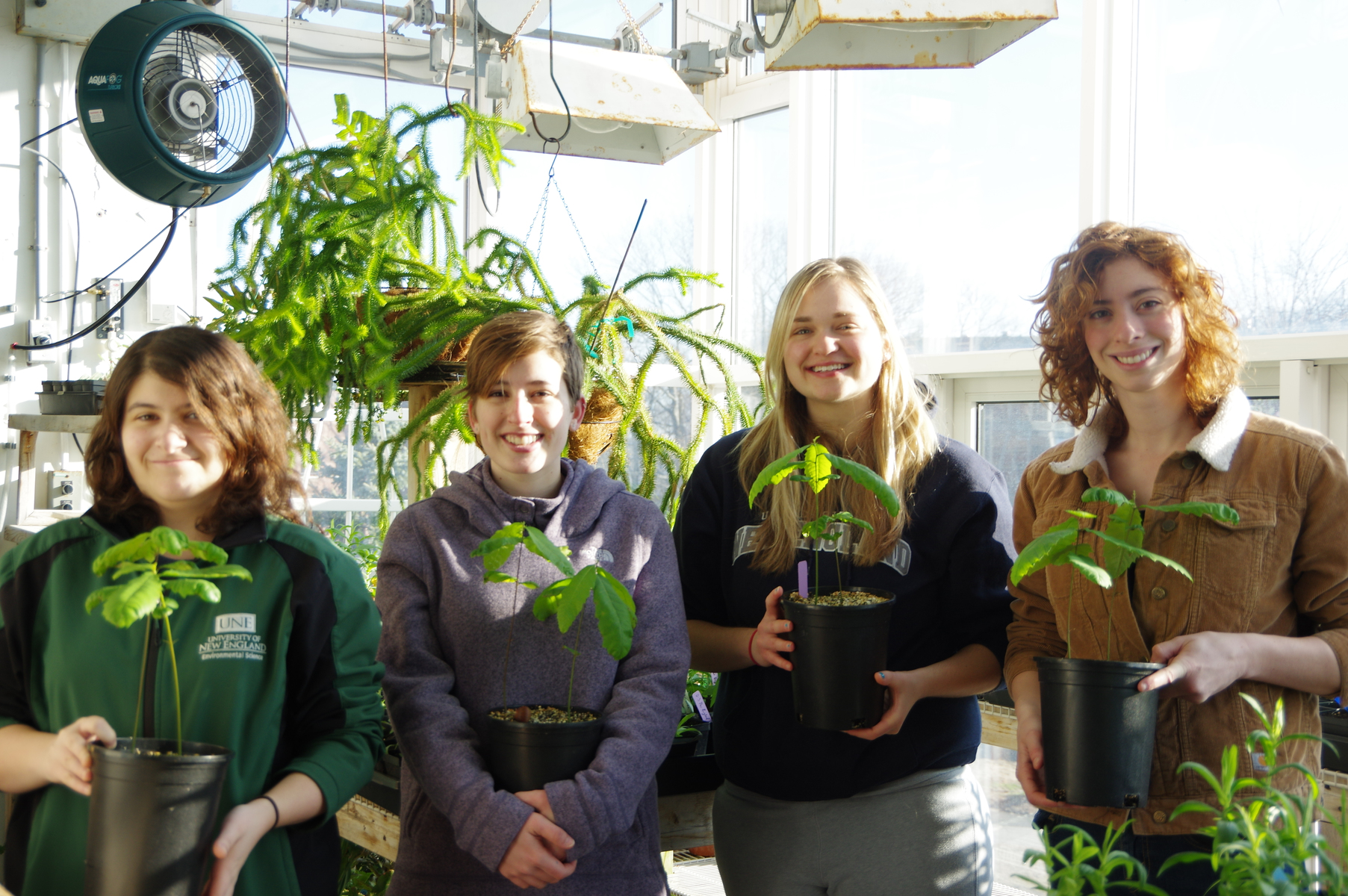The American Chestnut: Once a Foundational Species of Eastern U.S. Forests

The magnificent American chestnut (Castanea dentata) once reached more than 100 feet in height and occupied 200 million acres of the eastern United States, including Maine. Its rot-resistant lumber was valued as a building material and for making cradles, tables, beds, caskets, and much more. Edible chestnuts were produced in great abundance and sustained wildlife, livestock, and people. Rural Americans gathered chestnuts in huge quantities for shipment by rail to cities along the eastern seaboard, where street vendors roasted and sold them, especially around the winter holidays.
The Devastating Chestnut Blight
In the late 1800s, an invasive, pathogenic fungus known as chestnut blight (Cryphonectria parasitica) was accidentally introduced from Asia on imported Japanese or Chinese chestnuts, which tolerate the fungus. The blight was first discovered in the New York Zoological Garden in 1904, and by 1950 it wiped out an estimated 4 billion American chestnut trees. The pathogen kills the tree above ground, but its root system remains intact and survives primarily as root shoots in the understory, rarely becoming large enough to reproduce from seed. For this reason, the species is considered functionally extinct at this time.
American Chestnut Restoration Efforts
Since its founding in 1983, The American Chestnut Foundation (TACF) has been committed to breeding a blight-resistant hybrid American chestnut tree. A close cousin to the American chestnut, the Chinese chestnut co-evolved with the blight and has some level of resistance. The first step in TACF’s breeding efforts involves crossing some of the few surviving American chestnuts with blight-resistant Chinese chestnuts. Offspring are then planted in breeding orchards and screened for blight resistance. The most resistant offspring are backcrossed again with pure, native American chestnut trees. The entire process is repeated multiple times to produce hybrid trees that are 1/16 Chinese chestnut and 15/16 American chestnut. Sixth generation hybrid trees are known as B3F3s. The goal is to produce trees that look like the American species but are resistant to blight.
University of New England’s Department of Environmental Studies is collaborating with TACF to assess the performance of these sixth generation B3F3 hybrid American chestnuts. As a departmental capstone project in the spring of 2016, four students planted more than 80 hybrid American chestnut seeds, seedlings, and saplings in varying environments on campus. UNE’s test plantings will provide TACF with information about optimal soil and light conditions for reintroducing potentially blight-resistant trees to the forests of Maine and the eastern U.S. The expected blight resistance for these B3F3 hybrid trees is intermediate, falling between the American chestnut’s and the Chinese chestnut’s resistance levels.
Many of UNE’s hybrid American chestnut trees are planted behind this sign, while others are located near the Peace Grove, the Community Garden, and the Healing Garden. Future environmental students will continue to monitor the trees and assist TACF with this important restoration work.
Field trials such as this are being conducted throughout the chestnut’s native range and serve as a significant resource for science and education. The partnership between UNE and TACF is a tremendous effort in restoring the American chestnut to its former glory, for generations to come.
University of New England’s Department of Environmental Studies is collaborating with TACF to assess the performance of these sixth generation B3F3 hybrid American chestnuts. As a departmental capstone project in the spring of 2016, four students planted more than 80 hybrid American chestnut seeds, seedlings, and saplings in varying environments on campus. UNE’s test plantings will provide TACF with information about optimal soil and light conditions for reintroducing potentially blight-resistant trees to the forests of Maine and the eastern U.S. The expected blight resistance for these B3F3 hybrid trees is intermediate, falling between the American chestnut’s and the Chinese chestnut’s resistance levels.
Many of UNE’s hybrid American chestnut trees are planted behind this sign, while others are located near the Peace Grove, the Community Garden, and the Healing Garden. Future environmental students will continue to monitor the trees and assist TACF with this important restoration work.
Field trials such as this are being conducted throughout the chestnut’s native range and serve as a significant resource for science and education. The partnership between UNE and TACF is a tremendous effort in restoring the American chestnut to its former glory, for generations to come.
